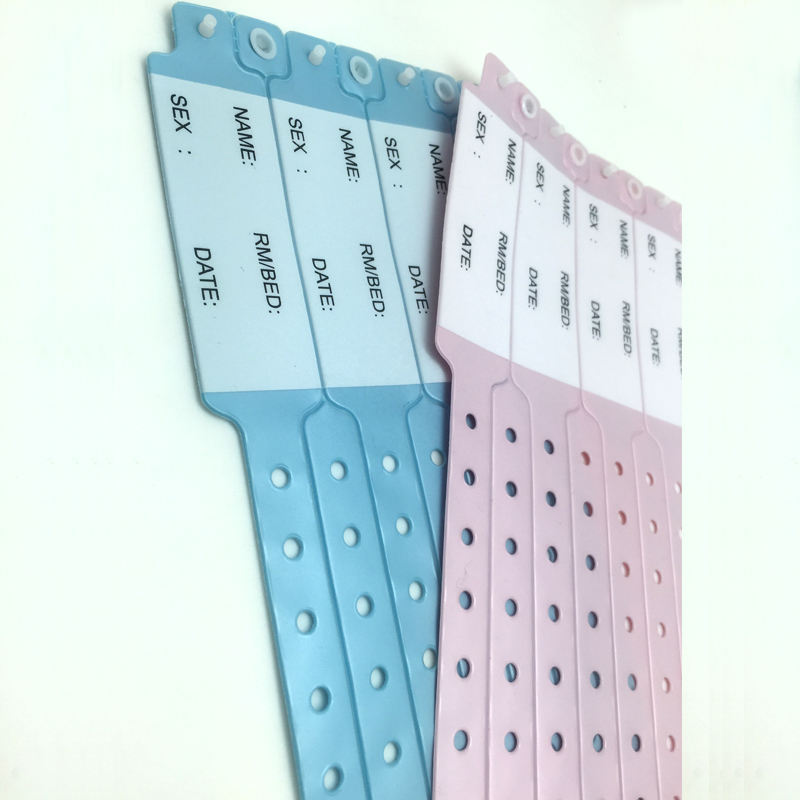Simplifying Individual Care With Effective Recognition Bands
The application of reliable identification bands is an essential aspect in improving patient care within healthcare settings. These bands not just serve to alleviate the dangers connected with patient misidentification however also enhance communication among clinical employees, consequently cultivating a much safer setting. Various kinds of recognition bands cater to certain requirements, from long lasting wristbands for grownups to specialized bands for infants and crucial situations. As the landscape of person identification advances, one should consider the effects of these systems on overall healthcare shipment and patient outcomes. What advancements await in this important area?
Significance of Individual Recognition
Ensuring accurate individual recognition is critical in healthcare settings, as it directly influences the safety and security and top quality of care supplied. Misidentification can cause severe mistakes, including carrying out the incorrect medication, carrying out inaccurate procedures, or miscommunicating important client info. Such mistakes not only jeopardize patient safety and security but can likewise result in lawful implications and reduced depend on in health care systems.
Reliable person identification is basic to establishing a protected environment where patients obtain individualized and suitable treatment. It assists in the exact documents of case histories, allergies, and treatment plans, making sure that medical care carriers have accessibility to important details in all times. Moreover, durable identification protocols assist streamline interaction among clinical personnel, improving partnership and reducing the danger of mistakes.

Kinds Of Identification Bands
Recognition bands play a critical function in keeping precise person records and enhancing security within health care atmospheres. Numerous kinds of recognition bands are made use of to deal with the specific demands and demands of various person populaces.

Another kind is the ankle band, which is specifically useful for infants and infants, making certain that identification stays undamaged even throughout care treatments. Specialty bands, such as those for allergic reaction notifies or fall threat indicators, provide extra layers of safety and security by attracting instant focus to essential client problems.
Just recently, digital recognition bands have actually gotten appeal, incorporating barcodes or RFID modern technology that can be scanned to rapidly recover individual data. These bands simplify workflows and minimize the risk of human mistake during individual identification procedures.
Advantages of Effective Identification
Efficient recognition of people through making use of recognition bands adds considerably to total individual safety and security and care top quality. By making certain that each patient is accurately determined, medical care suppliers can successfully match clinical therapies and procedures to the right person, lessening the danger of errors. This is especially important in atmospheres with high client turnover, where the possibility for misidentification is better.
Additionally, effective identification bands boost communication amongst medical care groups. Precise and clear client identification cultivates cooperation and ensures that all staff member recognize a client's specific needs and medical background. This communication is necessary for supplying collaborated care, particularly in emergency situations where time is critical.

Ultimately, effective recognition via using identification bands not just safeguards individuals but additionally promotes a society of safety and security within health care facilities (Patient Identification Band). By focusing on exact recognition, health care organizations can improve outcomes and boost the total person experience
Carrying Out Identification Systems
While the relevance of individual identification is well acknowledged, the implementation of durable identification systems positions a complex obstacle for health care companies. Developing efficient identification systems requires a my sources detailed strategy, incorporating modern technology, workers training, and procedure combination.
First, companies have to select ideal identification innovations, such as barcode scanning, RFID, or biometric systems. Patient Identification Band. These innovations should be examined based on price, use, and compatibility with existing framework. A pilot program can assist identify prospective concerns before full-scale implementation
Following, thorough training for staff is crucial. All personnel should understand the value of accurate person recognition and excel in making use of the chosen innovations. Routine training updates and assessments can enhance finest techniques and guarantee continued compliance.
Additionally, health care organizations must create standard procedures for person identification throughout all divisions, enhancing and reducing inconsistencies communication. Routine audits can help identify gaps in adherence to these methods.

Eventually, an effective execution of recognition systems not just enhances patient safety yet additionally fosters a culture of accountability and diligence within healthcare setups, making certain consistent and trustworthy person treatment.
Future Trends in Person Recognition
Improvements in innovation are readied to reinvent individual identification practices in medical care settings. The combination of biometric identification methods, such as fingerprinting and face acknowledgment, is expected to improve precision and protection. These modern technologies can considerably reduce the risk of misidentification, ensuring that individuals receive the proper therapies and drugs.
Moreover, the execution of blockchain modern technology for individual records is obtaining grip. This decentralized strategy can offer a tamper-proof and safe and secure method for handling client identifications, thus simplifying access to important information throughout different health care companies.
One more trend is the boosting use mobile health and wellness applications that utilize QR codes for patient identification. These applications allow for real-time updates and very easy access to client data, empowering healthcare specialists browse around these guys to make enlightened choices promptly.
Furthermore, artificial intelligence (AI) is poised to play a key function in evaluating individual identification information, identifying patterns, and anticipating possible identification mistakes prior to they occur.
As these innovations develop, they guarantee not just to boost individual safety but also to improve the overall performance of health care shipment systems. Accepting these advancements will certainly be important for future-proofing patient care techniques.
Conclusion
To conclude, effective recognition bands are important for enhancing person security and care top quality within health care settings. By reducing the dangers connected with misidentification, these bands facilitate timely and precise details retrieval, eventually enhancing communication among health care providers. The execution of robust recognition systems not just promotes a culture of safety however additionally placements healthcare institutions to adjust to future patterns in client identification innovation, ensuring optimum results for individuals in diverse scientific environments.
As the landscape of individual recognition progresses, one must take into consideration the implications of these systems on general healthcare shipment and patient end results.Reliable individual recognition is basic to developing a safe and secure atmosphere where people receive suitable reference and personalized care. Inevitably, prioritizing efficient individual recognition techniques not only fosters a culture of security yet also contributes to enhanced client end results and total contentment with health care services.
Efficient recognition of people through the use of identification bands adds considerably to total patient security and care high quality. The execution of durable identification systems not only cultivates a society of safety and security yet also positions health care establishments to adapt to future trends in individual identification technology, making sure optimum results for people in diverse medical environments.